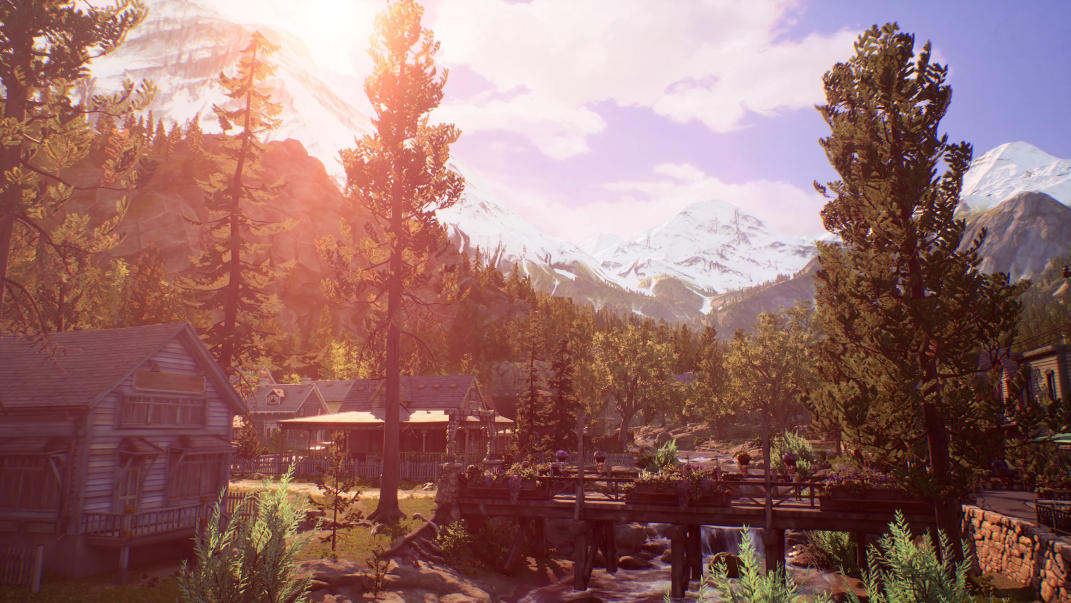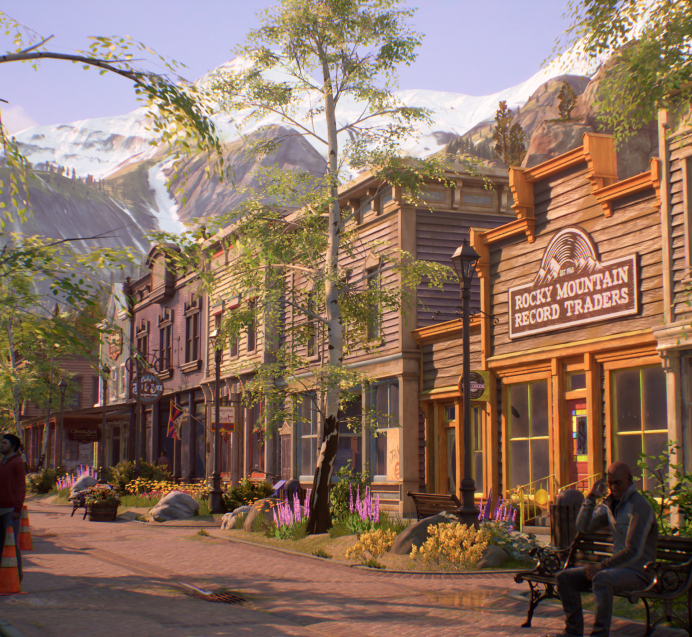
Deck Nine, Square Enix, and Dragons Lake



Pretty sure that Life Is Strange: True Colors would become a smash hit, Square Enix, a publisher known for its Final Fantasy, Dragon Quest, and Tomb Raider video game franchises, started looking for a dedicated team to be able to get their product into the Nintendo eShop. We joined the project while Deck Nine, developers behind True Colors, were still building the game for the other platforms.
Our 15 Dragons, including programmers, technical artists, 3D artists, and QA pros spent a year making sure the players get the same experience on the Nintendo Switch as they would on other gaming platforms.
Finally, after months of chugging espresso, our Switch version turned out impressive.

Being able to deliver graphically advanced games to the player on Nintendo Switch is a technical challenge. You probably know that. So before we get into a rabbit hole of techie language, we’ll just tell you that we optimized and reworked the CPU processes to squeeze as much performance as possible and render the scenes at high quality with 30 frames-per-second. That said, we moved all the content, including facial animations, character performance capture, full uncut audio, a licensed music soundtrack, and all post-processing effects to the Nintendo Switch version of Life Is Strange: True Colors.
No, it wasn’t a cakewalk.

Life Is Strange is a narrative-driven game that feels like a movie. A huge part of this game’s feel and tone is dictated by lighting so we just couldn't overlook it on Nintendo Switch. But how do you deal with all those dynamic lights and realistic shadows?
The problem is, when you're porting a game like this to a platform like Switch, you need to come up with some creative solutions.
Our solution was to rebuild the entire lighting engine. We developed a custom light baking pipeline and implemented a brand new approach specifically for Switch to deal with reflection probes, shaders, and dynamic shadows for moving objects and people in scenes.
More than that, we made sure our Switch lighting model could also illuminate the faces blending away hard shadows and sharp lines.
By implementing Switch-specific processes to deliver each frame, we were able to create an immersive atmosphere with a similar level of lighting quality as on the other platforms. Plus, we nailed it in terms of performance.
high-polygon models, reworked to speed up rendering
Life Is Strange: True Colors is full of beautiful, carefully created objects of nature, realistic materials, and textures, and high-detail models which…of course… slow down the performance.

Because pixels are square, they cannot properly display round objects. That's why they describe the edges of round shapes as a staircase of pixels. When the edges of an image appear jagged or, in technical terms, aliased, engineers employ a process called anti-aliasing to eliminate visual stair-stepping of edges on the screen.
FXAA (Fast Approximate Anti-Aliasing) and TAA (Temporal Anti-Aliasing) are two common post-processing anti-aliasing methods that we could use to smooth out the edges.
The difference between these methods is that FXAA identifies and corrects the jaggies pixel-by-pixel causing minimal load on the GPU, and TAA looks at previously rendered frames to analyze the aliasing and project an anti-aliased version of the pixel. TAA is a much more resource-heavy process than FXAA. Said that, FXAA is not perfect either. It can blur things, especially text and HUD.
To solve the anti-aliasing dilemma, we chose the FXAA method to kill the 'rough edges' in the handheld mode. But in the docked mode, we went for the TAA solution because of its better visual quality but reworked it to minimize the GPU load. We used a combination of TAA and FSR to achieve the needed image quality.
All unique post-processing features rebuilt for Switch
Atmosphere, light shafts, bloom, depth of field, screen-space ambient occlusion (SSAO) – these effects are too heavy for Nintendo Switch to cope with. It would've been just fine to remove them, right? Maybe. But our goal was to achieve visual quality and keep the atmosphere which is very important for the LiS Story, comparable to that on the other platforms. That's why we reworked all the post-processing effects to create new Switch versions.
Docked or handheld, the game looks great in both modes

Life is Strange: True Colors was our most ambitious Life is Strange title to date so we had our challenges with how the high-fidelity character animations and performances would translate to a portable format. Dragon’s Lake rose to the challenge with exceptional technical expertise, professionalism, and commitment to meet our expectations. With their knowledge of the platform and smart solutions they ensured that we didn’t compromise on quality and delivered an excellent portable experience and a successful franchise debut on the Switch.